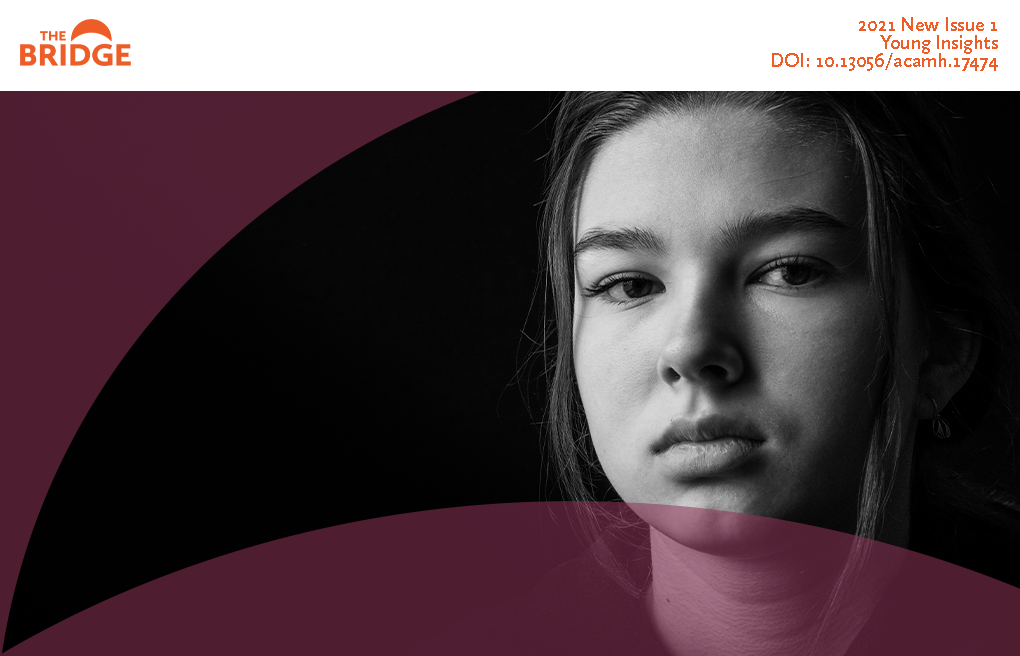
In this thoughtful article, a young person, Anna, reflects on her experience of risk being conflated with mental illness in child and adolescent mental health services (CAMHS), highlighting crucial lessons for clinicians, commissioners, and policy makers.
I have often felt that physical risk (like self-harm or suicide attempts) is interpreted as synonymous with mental illness by clinicians, and is (mis)used as a measure of severity. If young people are not physically hurting themselves in some way, it can often feel as though our mental health concerns are not seen as worthy of treatment. Perhaps this is because people still don’t value mental health the same as physical health, so a mental illness alone doesn’t seem serious enough to warrant treatment. Or because physical injuries are just easier to measure and believe. Whatever the reason, it can seem like young people need to self-harm and/or attempt suicide to be considered mentally ill ‘enough’ to get support from stretched services. While self-harm and suicide attempts are very rarely only, or even mainly, done ‘for attention’, this can be an unexpected benefit and sometimes the only way to get help.
My experience
There were many times when I have tried to get help for feeling depressed, but was only offered it after acting on suicidal feelings. The first time I was referred to CAMHS, I was told I didn’t qualify for treatment, despite feeling depressed for several years and planning to kill myself. Several months later, after a suicide attempt, I was referred to CAMHS again and this time I was accepted. I don’t think anything about my feelings or situation had changed, and I can’t imagine I scored any higher on any depression measure the second time. Nothing seemed different except I had gone one step further. Another time, I was told by mental health staff in A&E to “come back again if you start feeling worse” after explaining I was feeling really low and was planning to hang myself. Can it get much worse? I felt I was left with the choice to get better by myself, or kill myself. And I had already failed at getting better alone. It’s hard to prevent suicide when people only qualify for help after trying to complete it. Many of those people won’t be lucky enough to be unsuccessful.
This isn’t only an issue with suicide, or in the beginning stages of accessing treatment. I also noticed it with self-harm once I was accepted to CAMHS. My self-harm seemed to be regarded as a measure of mental illness severity, and most sessions started with a discussion of how I’d hurt myself that week. Because I hadn’t cut as deep as some of my therapists’ previous patients, it seemed they thought my mental illness wasn’t that bad. If I had done less, or more but shallower, compared to the previous week, this seemed to be regarded as a sign I was getting better. Teachers seemed to share this view, and told me “you must feel better than before because you haven’t cut yourself”. So I couldn’t win. If I stopped self-harming, I was perceived to be better and didn’t need any support; but if I continued, I was continuing down the damaging spiral and the support was perceived to not be working, leading some teachers and clinicians to suggest it be taken away.
I think I only began to make real, and lasting, progress when a new therapist took me seriously all the time, and provided depression treatment even when I wasn’t self-harming. In cognitive behavioural therapy, I had time to really think about why I was depressed and how to cope. I had this time because I had already stopped self-harming, ironically, because I didn’t feel I needed to as I had committed to killing myself after my GCSEs. But luckily, the therapy actually broke through and I changed my mind. Unfortunately, I reached that point after several years of depression, as well as self-harm and suicide attempts.
“It’s so important to not become desensitised to suffering that isn’t physical”
Going forward
To provide useful support, it’s important for clinicians to take young people seriously even when they are not physically at risk, and appreciate that mental illness still drastically affects quality of life. Children shouldn’t have to self-harm or attempt suicide to prove that. Additionally, it’s more helpful to focus conversations about self-harm on the reasons behind and feelings before and after it, rather than about exactly what has been done. This allows people to understand how they are feeling and how to manage it, instead of just putting plasters on the situation by offering self-harm alternatives that just don’t cut it. If you can’t offer treatment because of limited resources, it can be helpful to acknowledge to the young person that their mental illness is an important problem, and that it isn’t their fault that poorly funded CAMHS can’t provide the support they need. This emphasises that they don’t need to change their behaviour or put themselves at risk to be worthy of help.
I know it can be really difficult, particularly in a system that isn’t built to be preventative or funded enough to treat everyone, but it’s so important to not become desensitised to suffering that isn’t physical. I think that if I had felt cared about and received treatment earlier, it wouldn’t have escalated so far and I wouldn’t have so many years of my adolescence tainted by mental illness, self-harm, suicide attempts and trips to A&E, not to mention fewer physical scars to deal with for the rest of my life. I can’t get my childhood back, but we can still prevent others from losing so much of theirs.
This moving account highlights the importance of building services that are adequately resourced to recognise mental illness and provide timely evidence-based treatment for all affected young people. Research demonstrates that many interventions for young people with mental illness are both clinically effective and cost-effective,1 yet the majority of affected young people do not receive this treatment.2 Therefore, there’s a strong ethical and economic case to strengthen CAMHS, so that fewer young people have the same experience as Anna, and more receive effective treatment when it’s needed.
References
- Khan L et al (2015). Investing in children’s mental health: a review of evidence on the costs and benefits of increased service provision. Centre for Mental Health.
- Mandalia D et al (2020). Mental health of children and young people in England, 2017: professional services, informal support, and education. NHS Digital.
Related links
- Blog: We neglect children’s mental health at our peril, S Scott
- CAMHS (Child and Adolescent Mental Health Services) Topic Guide
- Self-harm and suicide Topic Guide, R Sedgwick et al
How you can help
Do please share with your networks and get involved by;
- completing this 2min survey
- following us on Twitter @TheBridgeACAMH
- to contribute, and to give feedback, please email TheBridge@acamh.org



Discussion
This article resonates with me. I am a Hidden Harm counsellor working in a NGO. I work with children and Young People affected by substance misuse. My clients often have multiple ACES. The waiting list for CAMHS is at least a year long. Parents have been told that unless their children are ” actively” cutting, or the overdoses are ” serious” then they won’t be seen by CAMHS. Also told that CAMHS is for a diagnosable mental illnes: Not ” just” low mood.